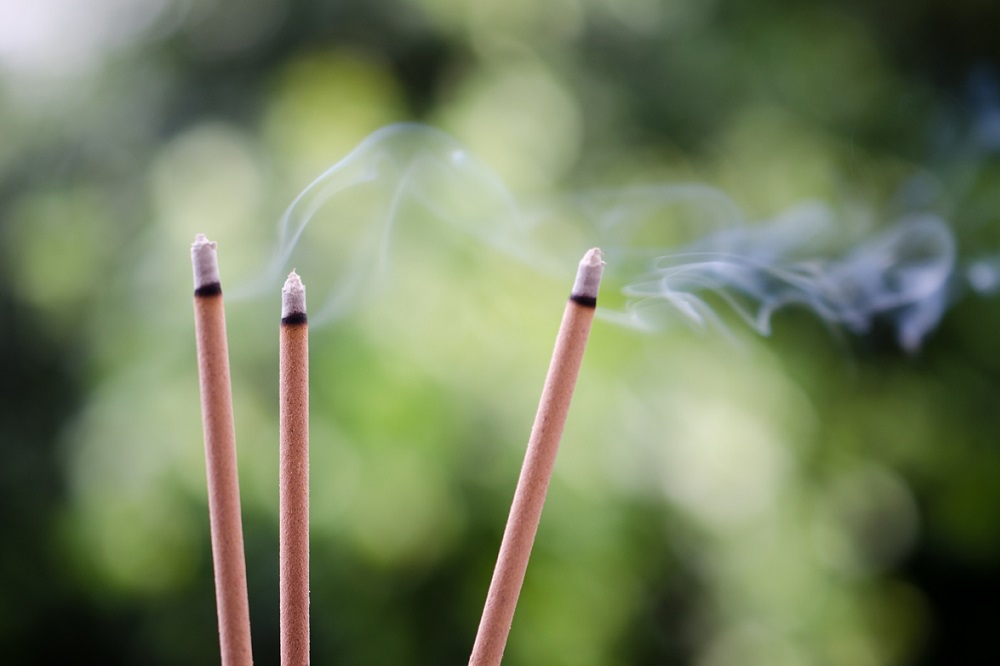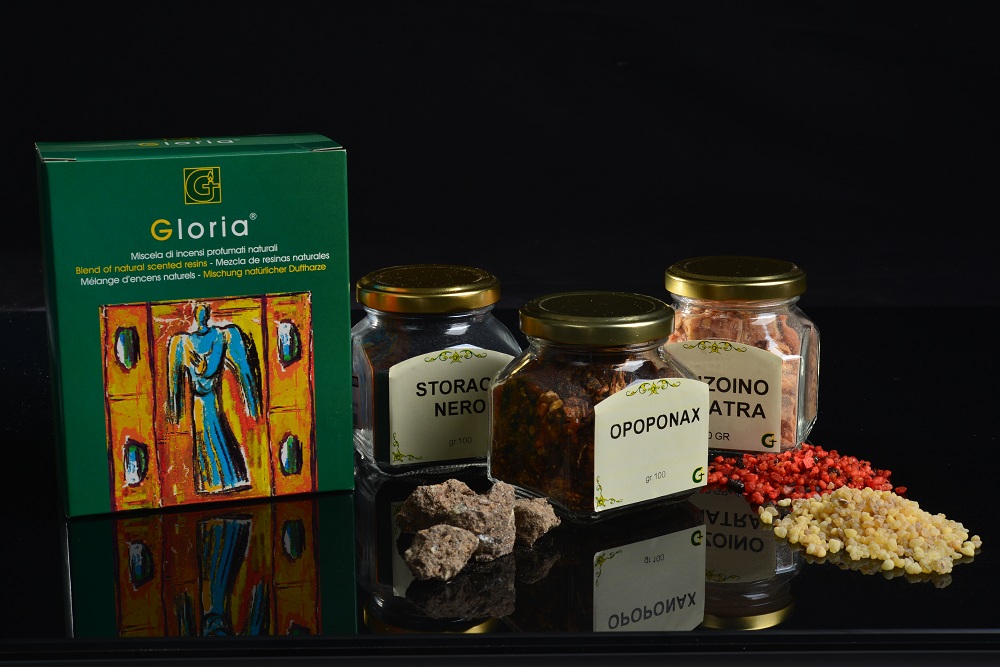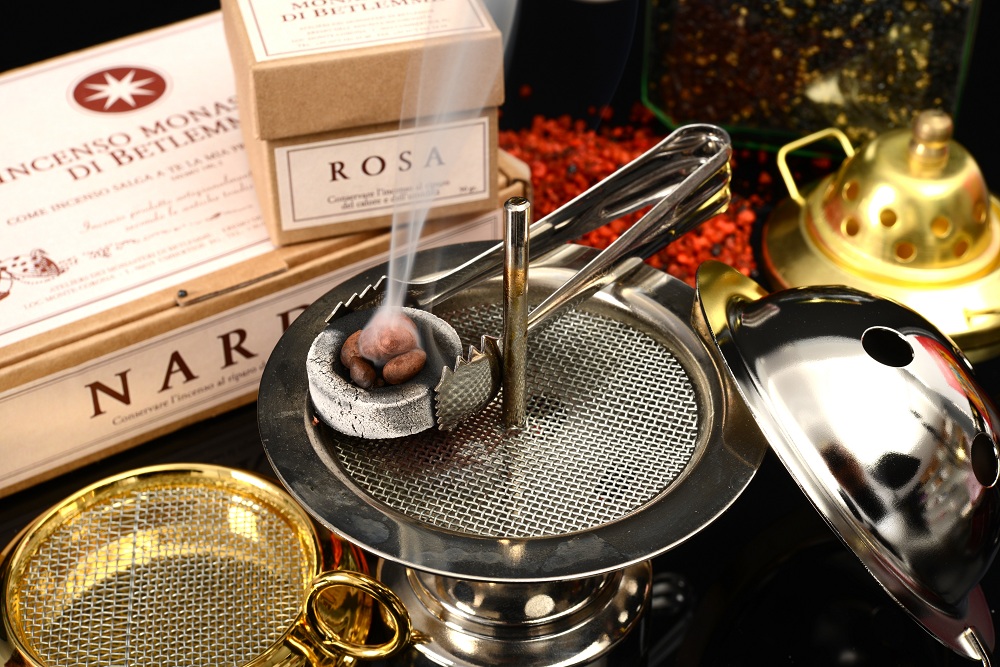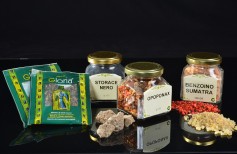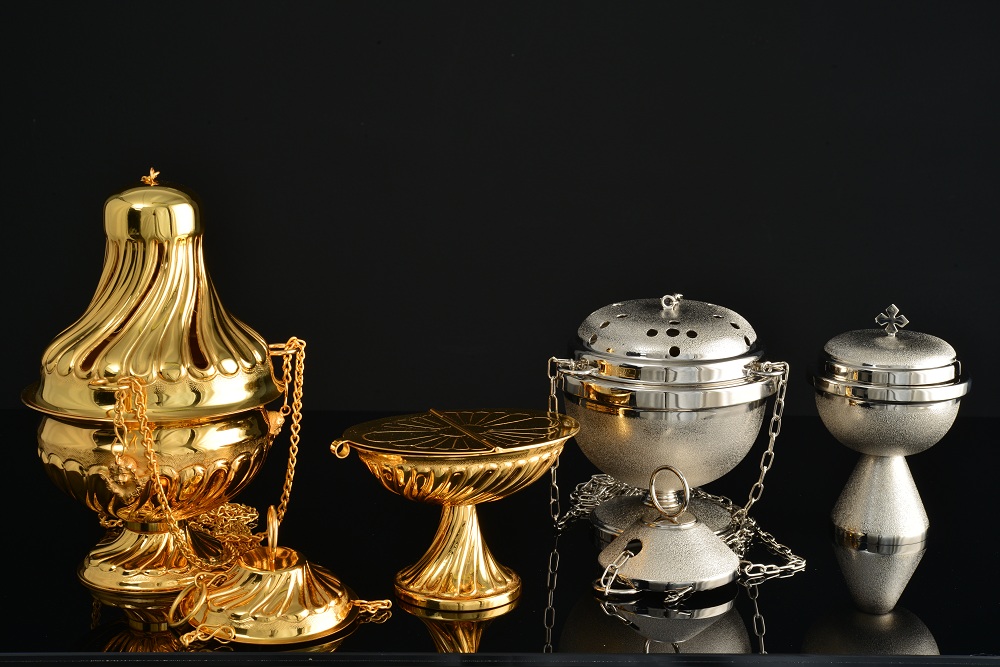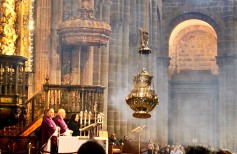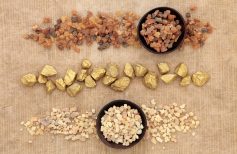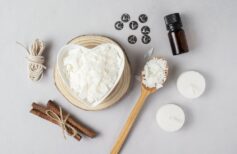Contents [hide]
Almost legendary substances loved by men and appreciated by gods. Let’s find out some secrets of incense and learn how to use them to scent your home naturally.
Since ancient times, man developed the belief that gods loved scents and appreciated that scented substances were offered to them in various forms, during rituals and celebrations. In ancient Egypt for example, and in Heliopolis in particular, the city dedicated to Ra, God of Sun, priests used to burn scented incense three times a day, depending on the position of the sun. According to the Egyptians, but not only them, the smoke coming from those miraculous substances represented some sort of connection between them and the gods. And it’s no coincidence that they used them to lead ministers to have visions, to allow them to talk with divinities elevating themselves to their same level. Incense was popular also in the Assyrian, Chinese and American Indian civilizations. Since Roman times, the Incense trade route connected the Arabian Peninsula with the Mediterranean: caravans used to carry goods coming by sea from India and Far East along this way, in particular they carried incense and many other scented essential oils, besides spices, metal, precious stones and other inestimable treasures. Again, Ayurvedic medicine has always largely used incense in its healing therapies.
So, using scented substances during rituals, prayers and spiritual activities, but also purifying and medical practices, is very ancient and largely diffused in all past cultures and civilizations.
More and more people choose to burn incense grains or sticks in their homes today. Why is that? Because incense, besides its undeniable sacred suggestions, also has the power to purify air, push negativity away and influence moods and state of mind in a positive way. But not just that. Some incenses made from particular plants have a real healing power, such as anti-inflammatory, antiseptic, antibacterial, antiviral properties, and so on.
Let’s find out more about these exceptional substances, so that we can choose the most appropriate for our needs, and learn how to safely use them.
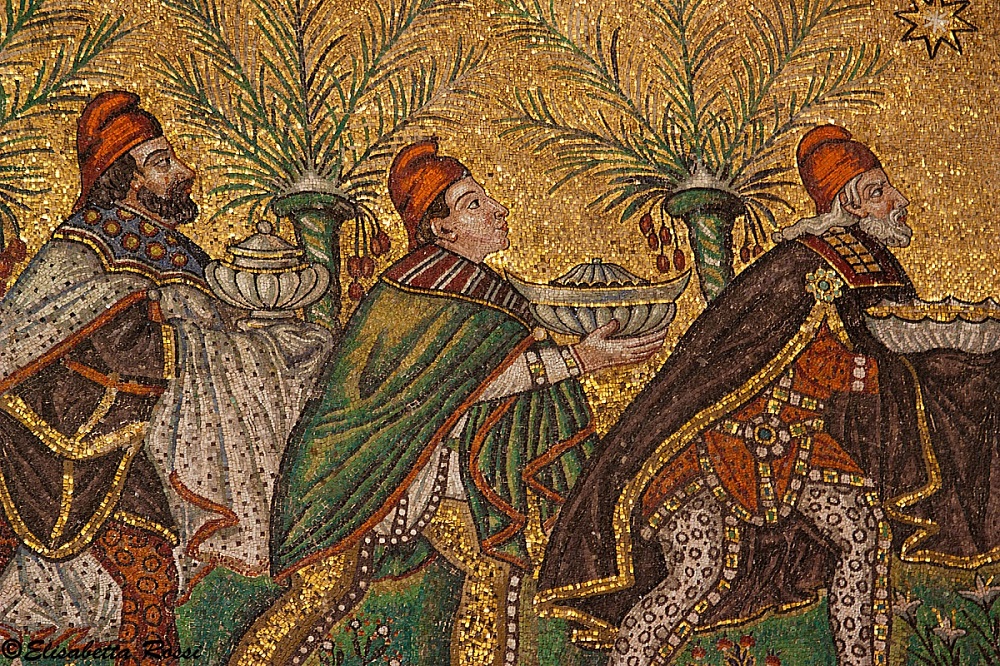
-
What incenses are
The word incense comes from Latin “incendere”, set on fire. With such generic name, are actually defined many parts coming from plants or bushes that, once they are set on fire, produce an aromatic scent. The same way, “incense” is the secretion of the resin coming from the plants of the Boswellie family, popular in the Arabian Peninsula. Another word used to call incense is Olibanum, from the Greek word líbanos, which comes from the Arab word “AL-LUBAN”, milk, referring to the Boswellie resin, which is white.
Incense can therefore come both from resin and a plant, whether its roots, bark, leaves or other parts. Once they are collected and minced, these substances are turned into crystals, grains or powder, or other manageable shapes, and mixed. They are burned then, emanating a strong and piercing smell. In ancient times, incenses were burned on plates placed over big braziers or directly on fire.
As we already said, in ancient times incenses were used to favor a connection with gods, the transcendence towards the sky. This was obtained through purification, provoked by the substances, and the elevation of the scents towards the sky, symbolizing the rise towards it and the detachment from material things. There was also a more domestic use, connected to the wish of purifying the air, cover bad smells, and favor concentration facilitating quiet and sleep.
Incenses are used to purify rooms still today, to calm and relax, to favor meditation, but in some cases they are also used to revitalize and give new energy.
-
Natural incenses: not only for liturgy
The Church had no hesitation concerning incense as sacred substance and therefore designated for religious ceremonies and celebrations. After all, it was one of the three gift brought to Jesus by the Wise Men, that could not be ignored. Jewish used incense for fumigation, burning it and breathing its smoke, to get closer to God. In the temple of Jerusalem, there was an altar for incenses and scents, and the smokes released symbolized prayers rising towards the sky. Christians looked at incense with suspicion at the beginning, associating it to pagan cults. Later they began using it in Church, to both purify air and hide bad smells, and as a fundamental element during ceremonies.
In Liturgy, incense means prayer and veneration of God. It is also a sign of respect and homage brought to him by his devotees, a sign of veneration and honor. At the beginning of the Mass and during the procession, it is used to incense the altar. More, it is used also during the offertory, during the proclamation of the Gospel, and the elevation of Consecrated Species. Even the devotees are incensed to ennoble their participation to the ceremony and underline their being an ecclesiastical community close to Christ. During religious funerals, the body is incensed to remember his being consecrated by Baptism and Confirmation.
As we already mentioned, incense is widely used in homes too these days. Many people use it to scent their homes. On the market you can find many types of incense, in various shapes, usually sticks or resin grains, to be burned on charcoal.
-
How to choose the right incense
Incenses for homes are often mixed with essential oils, Bach flowers and other scents. It is always better to opt for a pure incense, not mixed with sand or chemical additives.
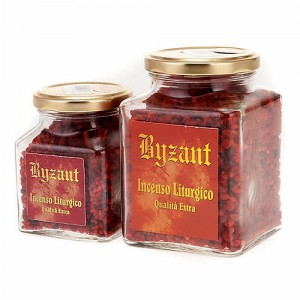
It is not hard to find them: incenses that burn in an uniform way, without crumbling, are the least pure and artificially treated. Those made of only natural substances crumble in an unevenly way when they are incandescent and look less compact. There are many varieties of incenses, with multiple scents and properties. Each one chooses the type that suits their taste and needs better. Some are more indicated to soothe and relax, others are meant to give energy and revitalize, and others favor meditation. Some others have healing properties, such as the menthol incense, made indeed of needle-shaped and uncolored menthol crystals, with balsamic and expectorant effects, and disinfect air and respiratory tract. The Messer incense, typical of Ethiopia, has a deep scent of cedar and citruses, and is a powerful antipyretic; if it gets chewed, it fights off oral cavity infections. Aloe incense frees the room from negativity with positive energies, giving a deep relaxing feeling and lightness of mind in case of bad thoughts. The Betekristian is another incense typical of Ethiopia, made of the resin pouring from incisions in the Boswellia Papyrifera bark. High quality, guaranteed to have no additional treatments nor scents, it has precious antiseptic properties, it treats sore throat and cough, relaxes the mind and soothes tensions. The Greek incense, sold in many different scents, can have different properties depending on the scent it is aromatized with: the rose-scented Greek incense evokes a sacred protection on your home; the jasmine-scented one helps break through mental blocks and elevate your thoughts; the carnation-scented one reawakens attention and revitalizes the body; the lemon-scented one has restorative properties and fights anxiety and irritability.
-
How to light up incenses in safety
Usually incenses for homes are sold as sticks or resin crystals that need to be burned on charcoal supports. They can reach very high temperatures, therefore they have to be placed in containers that can sustain such heat. The ideal supports would be metal censers or a thurible, but a small pot or a metal plate filled with sand are good as well. It is better to avoid ceramic and glass, they might break. In addition, terracotta can be a good alternative. The charcoal is lighted up with a lighter or a candle, and placed on the chosen container. On it, we pour incense crystals or grains. Charcoal lasts about 40 minutes. Another way to burn incense in safety is by using a resin burner, a small tripod with a plate hanging over a candle. The flame of the candle heats up the crystals on the plate, turning them into scented smoke. Sticks are obviously easier to use, even though they are often enriched with synthetic oils and scents. In this case, a normal ashtray can be good, even if you can find pierced incense burners of any kind and material in stores.
-
Where to buy incenses
Today incenses are available everywhere, in herbalist’s shops or malls. Obviously, since they are products that have to be burned at home and their aromatic scent is breathed by our beloved ones and us, it is always safe to choose accurately. As written above, it is better to buy natural incenses, scented with essential oils and non-synthetic scents. You can find a wide variety of incenses of any kind online, liturgical or medicinal ones, giving you the option to buy small samples of different types to try them out and find the one you like the most.

